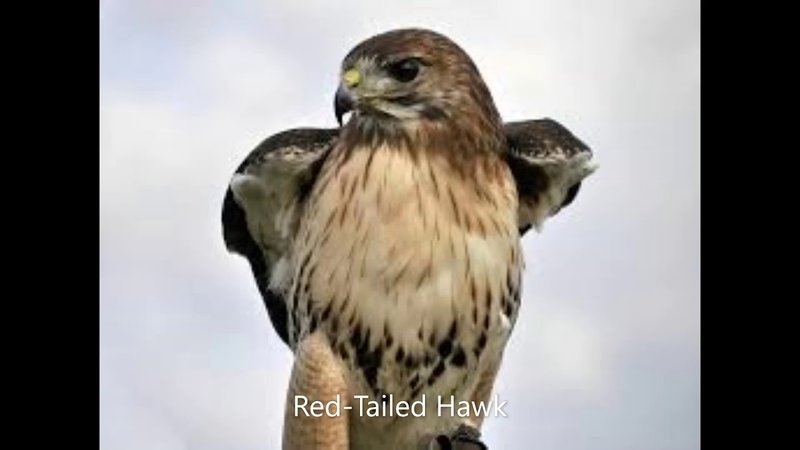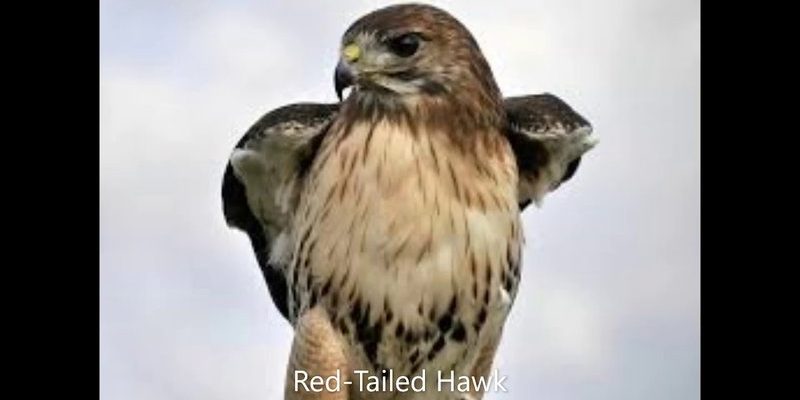
In this article, we’re going to break down the fascinating world of red-tailed hawk vocalizations. You might be wondering why a bird’s call even matters, or how it differs from other birds. Let me explain: vocalizations play crucial roles in communication, signaling everything from territory to mating calls. Understanding these sounds can deepen your appreciation for these magnificent birds and their behavior in the wild. So, let’s dive into the meanings behind those unique calls!
What Do Red-Tailed Hawks Sound Like?
When it comes to vocalizations, red-tailed hawks have a variety of sounds that can catch your attention. Their most famous call is a high-pitched, raspy scream that sounds something like a “kreee” or “kreee-kreee.” Honestly, it’s pretty iconic. You might have heard it in movies or nature documentaries, often used to evoke a sense of wildness and freedom.
But their vocal repertoire goes beyond that single scream. Red-tailed hawks can also produce a range of other sounds, including soft chitters, sharp whistles, and even a few grunts. Each sound plays a specific role in their communication. For instance, the softer calls are often used between mated pairs, signaling comfort or reassurance. In contrast, the more aggressive screams indicate territory and dominance.
Why Do They Call?
You might be curious about why these hawks make such a variety of sounds. Honestly, it all boils down to communication—just like us, they’re expressing emotions and information. Here are a few reasons why red-tailed hawks vocalize:
- Territorial Claims: Their loud, screaming calls often serve as a warning to other hawks. It’s like shouting, “This is MY spot!” when they want to establish dominance over a territory.
- Mating Calls: During the breeding season, males and females will communicate through various sounds to attract a mate. Think of it as their version of a romantic serenade!
- Parenting: When raising chicks, adult hawks will use softer calls to communicate with their young. This can be a way of reassuring their fledglings that all is well.
- Alert Signals: They also use specific vocalizations to warn about threats, whether it’s an approaching predator or another bird in the area.
Understanding Their Calls
Let’s break down some of the calls you might hear when observing a red-tailed hawk. Their vocalizations can tell you a lot about what they’re feeling or what they might be up to.
1. The Classic Scream: As mentioned earlier, this is their signature call and is often used to establish territory. You’ll hear it as a loud, drawn-out sound that can travel quite a distance.
2. Chittering Sounds: If you hear softer, chattering noises, these might indicate that a hawk is at rest or communicating with its mate. It’s a less aggressive sound that conveys comfort.
3. Alarm Calls: When threatened, red-tailed hawks tend to produce sharp, quick calls. This could be a series of staccato notes meant to alert nearby hawks of danger.
4. Mating Calls: During courtship displays, you might notice unique sounds that include a mix of chattering and soft screams, used to woo potential partners.
By tuning into these calls, birdwatchers can gain insight into the behavior and mood of red-tailed hawks.
Where Can You Hear Them?
Red-tailed hawks are widespread across North America, so you have a good chance of encountering them in various habitats. You might spot them soaring above wide-open fields, perched on utility poles, or nesting in tall trees. Their calls often resonate in areas with plenty of natural resources, including forests, grasslands, and even urban environments.
The best time to listen for them is during the early morning or late afternoon when they are most active. If you’re lucky enough to be in an area where they thrive, take a moment to pause and listen. You might surprise yourself by hearing one of those distinct calls carried on the wind!
The Role of Vocalizations in Conservation
Understanding red-tailed hawk vocalizations isn’t just interesting—it can play a role in conservation efforts, too. As these birds often serve as indicators of ecosystem health, tracking their calls can help researchers monitor population levels and habitats. For instance, changes in their vocalizations could signal shifts in territory, mating success, or even environmental changes.
By studying their calls, conservationists can gather valuable data to ensure that these magnificent birds continue to thrive in their natural habitats. So the next time you hear a red-tailed hawk’s call, know that it holds more than just a beautiful sound; it’s a window into the health of our environment.
In a nutshell, red-tailed hawk vocalizations offer us a unique glimpse into the lives of these remarkable birds. From their classic, high-pitched screams to soft chittering, each sound serves a purpose that highlights their social interactions and behaviors. The more we understand these calls, the more we can appreciate the complexity of avian communication.
Whether you’re an avid birdwatcher or just someone who enjoys nature, tuning into the sounds of red-tailed hawks can enhance your outdoor experience. So next time you hear that piercing scream echoing through the woods, take a moment to listen—it might just be one of these beautiful raptors claiming its territory or calling out to its mate. It’s nature’s way of reminding us that every creature has a story to tell, and sometimes, all we need to do is listen.

